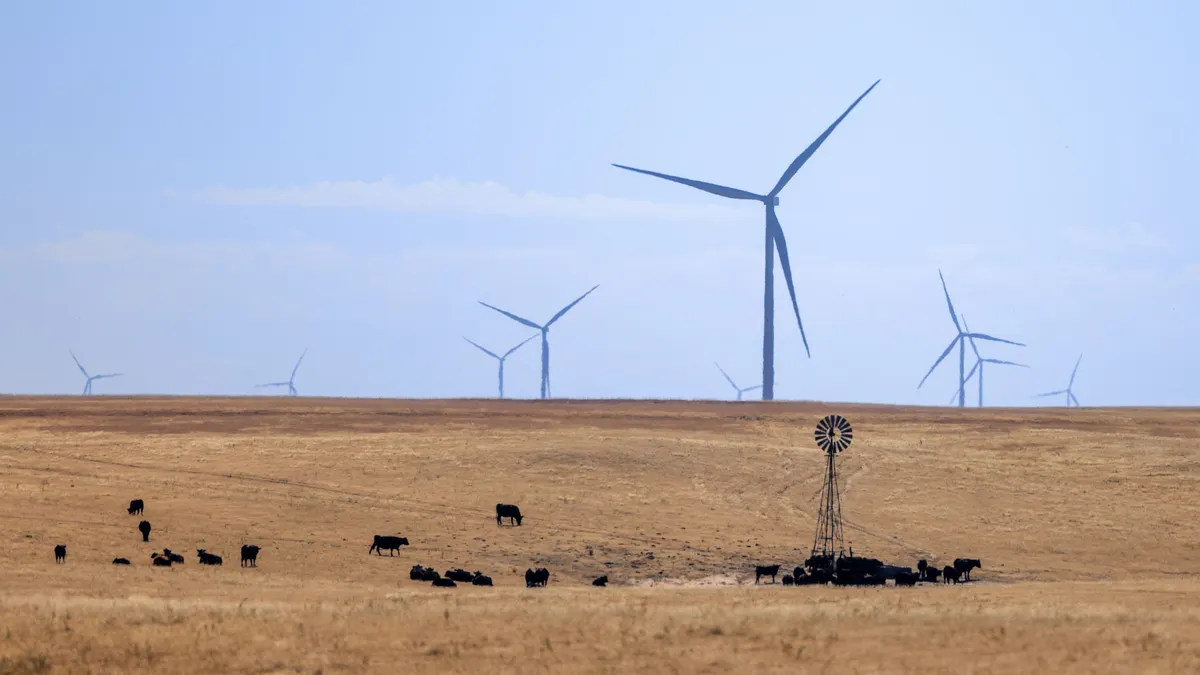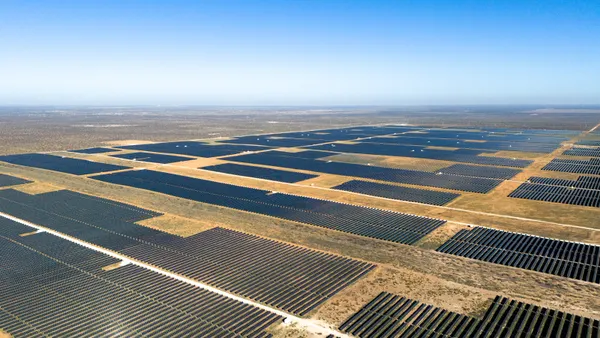The distress of the merchant power provider is well-known. All across the nation, low gas prices, stagnating electricity demand and an influx of subsidized renewables are stressing the finances of power plants that play in the open wholesale markets.
The issue has largely affected older coal and nuclear generators with high fixed costs. But in recent months, it has become so pronounced to force even some young, modern gas generators into bankruptcy, like the Sutter and La Paloma plants in CAISO last year and ERCOT’s Panda Temple Plant this spring.
Even the companies at the center of the merchant generation space appear to have lost faith in it. In a March earnings call, the CEO of NRG Energy, one of the nation’s largest independent power producers, said the merchant model is “now obsolete and unable to create value over the long term.” In June, NRG’s 14 GW GenOn portfolio filed for bankruptcy protection, and a month later, NRG announced a reorganization plan that includes the sale of 6 GW of conventional generation and up to all of its renewable yieldco.
But if the struggles of the merchant generation model are well understood, less so is what a power sector without a thriving merchant presence would look like. Such upheavals in organized power markets have not been seen since the days of the California energy crisis, and the contours of the power sector in a post-merchant world remain an open question.
One figure with a unique vantage point is Tony Clark. A FERC commissioner from 2012 to 2016, Clark previously entered the sector as a North Dakota utility regulator in 2000, giving him a front row seat to the natural gas boom and the expansion of the nation’s wholesale markets.
Now a Senior Advisor at law firm Wilkinson Barker Knauer, Clark and his colleagues have published a series of white papers outlining the causes and consequences of wholesale market upheavals. At the summer conference of the National Association of Utility Regulatory Commissioners, he told Utility Dive that a post-merchant market may look a lot like “joint dispatch markets,” where long-term bilateral power purchase agreements take the place of capacity markets as the primary means of ensuring adequate power supply.
“I think what probably happens is, to the degree somebody’s able to make a go of it, you probably have some combination of a movement toward longer fixed-term contracts,” Clark said. “Number two, you probably see the independent power producers try to balance out their portfolio of assets, so they're not so heavy in the merchant end of things, and they probably try to make sure they’ve got assets on the balance sheet that are regulated.”
"You're not seeing state legislators openly repeal what they did 20 years ago, but they may end up kind of in the same spot."

Tony Clark
Senior Advisor at Wilkinson Barker Knauer
The slide toward a joint dispatch model in the nation’s wholesale electricity markets could amount to what Acting FERC Chair Cheryl LaFleur called unplanned re-regulation, where market forces degrade the restructured market model to the point where it better resembles a bilateral dispatch model.
“I call it tacit re-regulation,” Clark said. “You're not seeing state legislators openly repeal what they did 20 years ago, but they may end up kind of in the same spot.”
While agnostic on the value of the changes, Clark’s white paper offers restructured states some strategies to preserve their market models if they want to prevent backsliding to a joint dispatch model. But they can’t do it alone — sooner or later, Clark said, the issue will end up at FERC.
The move to joint dispatch markets
That movement back to a reliance on bilateral PPAs is already apparent. This spring, utility holding company AES announced it would sell its stakes in Ohio merchant generators, which CEO Andres Gluski framed as a movement back to PPA reliance.
“Merchant markets right now, with the U.S. system, are basically not growing,” Gluski told Utility Dive. “So in a system like that, when you have new technologies come in, you're going to have a lot of obsolete plants, which are just dispatching to cover marginal costs.”
The quote harkens back to the warnings of another white paper from the WBK law firm from October 2016, when authors Ray Gifford and Matt Larson warned that merchant plants are increasingly unable to recover their fixed costs from market operations alone, pushing them to either pursue long-term power purchase agreements, or some sort of subsidy or market fix to better reward their generation.
If that trend continues, Clark said that as merchant generation contracts, the sector may “move away from capacity markets like we’ve seen.”
"Merchant markets right now, with the U.S. system, are basically not growing."

Andres Gluski
CEO at AES
“That's really why the capacity markets are there, is that you've got these fixed costs, missing money that you can't otherwise recover if you're not building the cost into base rates,” he said. “If the merchant model withers down enough where you have companies that are more in long-term PPAs, the capacity markets may either wither away or maybe just become a lot less important to the functioning of the market.”
If states continue pursuing “around market mechanisms” — subsidies or mandates for preferred generation — then the move away from capacity markets as they are currently constructed is probably necessary, Clark said.
When subsidized generation enters the capacity market, unsubsidized plants — largely gas and coal generators — complain that they force prices down, making it more difficult to recover costs.
“That’s where a lot of the chaos happens,” Clark said. “[A subsidy] has an effect on energy markets, but capacity markets are really what seem to be completely incompatible with that.”
To combat the problem, PJM and ISO-New England have proposed two-part capacity market auctions, which would essentially split subsidized resources from unsubsidized ones, allowing the latter to set prices in the capacity market.
While Clark applauds the grid operators for “making a go at it,” he remains skeptical that the proposed capacity market solutions could preserve the merchant model.
“These markets are so complicated as they are, and so when you start talking about adding on two-step options and set-asides and carve-outs … once you start doing that it's like, oh man, it's just one more straw,” he said. “Maybe they can make it work, but it's not going to look anything like a market. I mean, at that point, it's really a very top-heavy administrative construct.”
Other wholesale market problems may be easier to deal with. In California, where gas plant finances are threatened by rapidly-growing renewable generation, CAISO last year implemented a five-minute ramping product to reward generators and storage that can flex up and down quickly. MISO also implemented a 10-minute product last year. Clark said those more straightforward fixes are easier to implement than a top-down change of auction structures.
“That’s a pricing issue, right? If it's needed, and if it's a fast-ramping resource ... and there's a market reason to be there, there should be a market fix to do that,” he said. “But that's not existential … It’s not like the model doesn't work. It's just the way you've built it needs to be tweaked.”
Solutions for states
For states facing deeper challenges to their power market models, Clark’s white paper has one resounding message: Pick a model and don't mess with it. The paper cautions against building a “Rube Goldberg machine” of stacked subsidies and mandates, where each resource preferred by a state gets a policy support.
“New York's probably the best example, with Illinois now closing in on them,” Clark said, citing two states with nuclear power subsidies and hefty renewable energy mandates. “The only way to compete in that market eventually, if you're a merchant, is to go out and get your own subsidy.”
There’s nothing inherently wrong with states wanting to choose their own power mixes and favor certain resources, Clark said, but if they want to do that, “then just bite the bullet and re-regulate.”
If carbon is the issue states care about, Clark said they should consider replacing the litany of around-market mandates and subsidies with a price on CO2 emissions.
“If carbon's really the issue you're concerned about, then … think about taking out all those one-piece-at-a-time fixes, and throw a carbon price on,” he said. “Let the market do what it is, if you're really committed to a market. But if not, then take ownership of it.”
Already, some markets are moving in that direction. The CEO of the New York ISO told Congress last week that it could have a functioning carbon price integrated into market dispatch within three years. ISO-NE and PJM also have carbon pricing proposals, but because their jurisdictions contain multiple states, they must wait for the legislators to act on carbon pricing before implementing it in market dispatch.
But the least favorable route for market reform is the one many states are on today, Clark said, with a stack of subsidies and mandates on top of one another.
“Don’t create this middle-of-the-road [construct] where it’s like, 'We’ll choose the resources we like, but for 40% of the market or 50% that’s still dependent on price signals, forget it, you’re on your own,'” he said.
Clark’s white paper focused mostly on solutions for states, but he said the next edition may well focus on options for FERC. With two federal courts dismissing challenges to nuclear subsidies last month, it’s likely the issue of around-market mechanisms may come to a head in parallel FERC complaints generators filed against the subsidies.
"The problem is, if it was easy and there was a silver bullet, [FERC] would have found it already."

Tony Clark
Senior Advisor at Wilkinson Barker Knauer
“The fact is, it's all going to be back in their lap, and [FERC has] turned a blind eye, and just kind of let it play out, which pretty much means that especially the restructured market will suffer,” Clark said. “I don’t think FERC will ultimately just let the markets tank, but the Commission cannot just go in and totally preempt states because it is not a federal court.”
What FERC can do, he said, is exercise some of its discretion under the Federal Power Act, but exactly what those actions could be remains in question.
“The problem is, if it was easy and there was a silver bullet, they would have found it already,” Clark said. “But what [FERC] can do is, it can take those things that are within its authority under the FPA, in terms of market rules, and try to make some sense of it. And that's going to be where the real fight is.”
Absent a policy solution from FERC or the states, Clark said progression for the market is clear.
“I do think that the natural trend will be … more long-term contracting, and it starts to look a little more like a traditional model, even if it's within something that, at least in name, is restructured.
Correction: This post has been updated to reflect that the Panda plant in Texas is in bankruptcy, but has not been forced offline. A quote from Tony Clark has also been clarified.






















